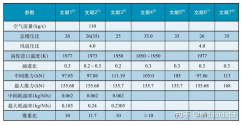Erm, this is a very bad example, because the lack of EF-111 replacement (now rushed in EW form of F-15EX) is currently seen as a core deficit of USAF structure, and EA-6 was directly replaced by F-18G(also with complaints that it isn't enough for deck use, since there is no guarantee larger USAF EW assets will be there to back it up).
And that's USAF with its large existing F-35 fleet, and USN with both. They still complain that chosen solution was at least a partial downgrade(navy) or a complete capability gap(USAF).
F-35 is an unlucky comparison here - as it is capable of only more or less automatic electronic attacks attacking ahead, in one band.
In this case, it isn't even a straightforward improvement over discrete systems of the previous generation - yes, the jammer itself is more capable and advanced, but again - only ahead, only one band, and pilot(who's effectively attacking) won't have much attention - or, likely, skill and education - to spare.
Frankly speaking, the fact that 2010s(oh that dangerous topic) fighters can do electronic attacks with their main array should be more viewed in the general picture(vastly improved EW order of battle, and expectation to significantly suppress all fire control systems under our attack...assuming they won't reply in kind), rather than replacement or even substitution to 360 deg systems with dedicated operators with special education and skills.
EF-111 and EA6B are both absolutely relevant as they are excellent examples of past dedicated EW aircraft whose capabilities can now be done with less aircrew in the cockpit, as a result of advancements in technology and automation.
In context of the original discussion for how "EW certainly requires more than one crew" the best way to view the trend of EW capabilities being distributed to more tactical aircraft is that more aircraft have EW capabilities and can take on the EW role than the past.
I personally think that the current J-20, as it is, is absolutely disastrous as a dedicated EW platform. It won't escort anything, it won't be able to degrade opponents' SA picture, comms, anything.
Its twin development can be made to carry pods from the J-16(their more independent and automated evolution) - but it still will be bad, simply because there are just 4 parallel(mutually interfering) underwing suspension points to play...which are also needed for oversized munitions and fuel tanks. Yes, flanker platform is bright as F on a radar screen, but for a plane that is supposed to be a blinding-bright sun on as many screens as possible, it just works.
However, J-20 (as, again, expected of the plane of its generation) is probably an absolute troll at mixing kinetic and centimeter- electronic attacks when it turns hot to engage. And in this form, it's a very brutal development for A2A(expected), but also SEAD/DEAD.
p.s. but the main point for me personally is still the professional operator(1) with time(2) and dedicated hardware(3). In this order.
I.e. among current fighter planes, there is one sorta- EW battlestar - that's Su-57 again. But because of (1) and (2) it's still ultimately a fighter, regardless of hardware - and the commander using it instead of a proper EW will suffer.
Much like eurocanards with their fancy suites - survivable, but even escort jamming is realistically beyond them.
I disagree, I think the single seat J-20 can absolutely function well as a dedicated EW aircraft, second only to the J-16D and that's only because J-16D has dedicated EW pods. But in terms of the in built ESM capabilities of each aircraft and the EW capabilities of their primary radar, I would be surprised if J-20 was inferior.
J-20 even has some tactical advantages due to being stealthy and better able to maintain higher speeds than J-16D which are absolutely consequential to the tactical dedicated EW role.
Going back to the original point, which is my contesting of the "EW certainly requires more than one crew" statement (which I note for some reason you chose not to quote in your reply despite it making up about half of my word count in my last reply), my overall point is
1: for the dedicated EW mission today, you can absolutely do that with only one crew member due to advances in technology and automation, especially in 5th generation aircraft. The proliferation of capable EW subsystems are a trend where modern fighter aircraft can fulfill the dedicated EW mission if their mission profile was oriented for it, at the expense of the other roles in what is nominally a multirole fighter aircraft.
2:
however, if your aircraft has more than one crew member, it will perform significantly better in the dedicated EW mission than if the same aircraft had only one crew member.
The above applies to J-20 single seater variants and the twin seater variant if the PLA should go for the latter.

